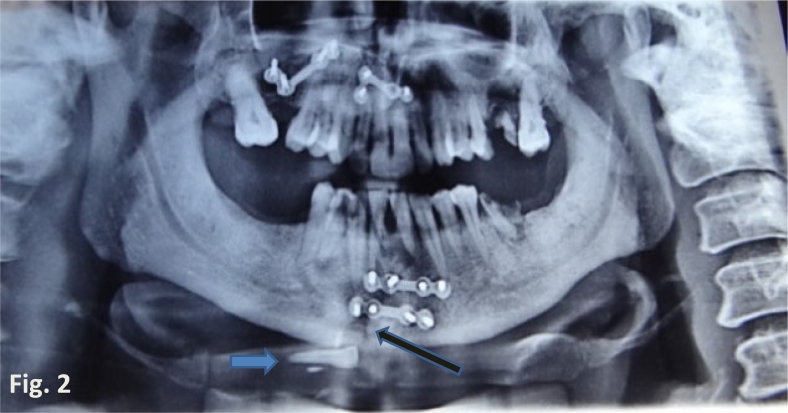A Tooth Drifted To A Man’s Chin

As per the case report published on April 18 in Trauma Case Reports, a man’s incisor was migrated into a deep tissue below his chin area, which had to be removed by surgery. It was a rare yet important occurrence throwing a spotlight on the need for secondary reviews and scans of maxillofacial trauma.
Further corroborating this report, a group of doctors and experts led by Shahi Jahan Shah, DMD, of the department of oral and maxillofacial surgery at King Khalid University in Abha, Saudi Arabia, said that the displacement of the tooth could happen due to the fracture line. Thus in such events when a tooth is not accounted for, it is sensible to go for a second exam and panoramic radiograph especially in cases involving dental & maxillofacial trauma.
What are the problems with Tooth Displacement?
In most of the cases, managing a displaced tooth is quite straightforward. But the diagnosis and handling could become difficult and unpredictable if teeth move to abnormal locations like maxillary sinus, nasal cavity, gastrointestinal tract, etc. Furthermore, such teeth and their fragments embedded in soft tissues can also lead to serious complications including wound separation, fibrosis, and death.
Polytraumatic cases where primary exams are performed but secondary surveys are delayed or ignored could severely enhance the risk associated with unusual tooth migration.
What happened with a man whose tooth migrated into his chin?
In an unfortunate traffic accident, this man suffered multiple injuries in the maxillofacial region and lower limb. A team of surgeons operated him, putting in mini plates to repair his pan facial trauma. Two months after the surgery, the man had swelled with a round, firm, localized mass on his lower right chin area and wasn’t responding to antibiotics and analgesics. The plastic surgery department referred him to the oral department.
The dental clinicians noticed the swelling to his submental space and conducted a panoramic radiograph to evaluate the fracture site. The radiograph clearly showed a displaced central incisor lying at the base of the parasymphysis near the fracture site. The dental surgeon operated the region, removing the unusually displaced tooth from the man’s chin via surgery.
What do we conclude?
This case strongly exhibits the need for a thorough secondary survey along with a primary survey for a patient with dental and facial trauma. It is highly possible that in the above case, primary surgeons missed the tooth during their early examination probably because they were not aware that the second survey was needed or maybe they were not proficient in the dentition.
Also, it foregrounds the need to include oral and maxillofacial surgeons as a part of multidisciplinary teams when such injuries arise. Having a panoramic radiograph in addition to a basic CT scan, in emergency rooms dealing with maxillofacial trauma can also be greatly beneficial.
